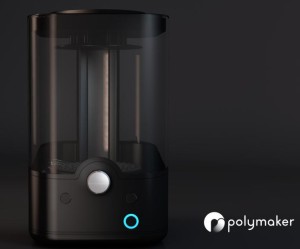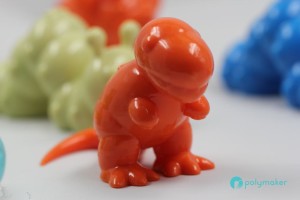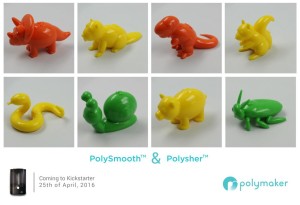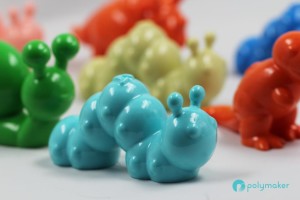Get 3D Printed Parts That Look Like Injection Molded Parts with Polymaker’s PolySmooth and the Polysher
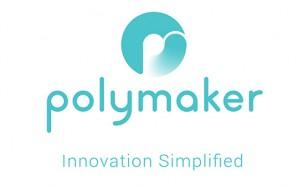 While 3D printing has come a long way in the last decade, the one thing that the technology just hasn’t been able to beat is the striation marks left behind after a 3D print is completed. While the resolution possible with modern desktop 3D printers is impressive, and far better than it was even a few years ago, it can’t produce a surface that can compete with injection molding. Advanced materials that bond better and enhanced software that optimizes the way that layers are laid down has reduced striation, or stepping, but the problem really isn’t with the technology — it’s with physics. The problem is the surface tension of the plastics typically used on FDM 3D printers, which isn’t something that can easily be overcome.
While 3D printing has come a long way in the last decade, the one thing that the technology just hasn’t been able to beat is the striation marks left behind after a 3D print is completed. While the resolution possible with modern desktop 3D printers is impressive, and far better than it was even a few years ago, it can’t produce a surface that can compete with injection molding. Advanced materials that bond better and enhanced software that optimizes the way that layers are laid down has reduced striation, or stepping, but the problem really isn’t with the technology — it’s with physics. The problem is the surface tension of the plastics typically used on FDM 3D printers, which isn’t something that can easily be overcome.
While there are several smoothing post processing materials on the market, ultimately the most commonly used is good old fashioned sanding. Someone who knows what they are doing can create some amazingly smooth surfaces, but to put it lightly, it is a bit labor intensive. But the solution to giving 3D printed parts an injection molded smooth surface may lay with 3D printing material manufacturer Polymaker and their new PolySmooth filament and Polysher desktop smoothing machine. Together these products are capable of transforming a 3D printed part right before your eyes, and you won’t have to do a thing.
“For extrusion-based 3D printing, the poor surface quality has always been a prominent disadvantage which separates 3D printed parts and parts made by conventional manufacturing methods. What we want to do is to bridge this gap, bringing 3D printing to the realm of making final products, not just prototypes,” said the President of Polymaker, Dr. Xiaofan Luo.
PolySmooth PVB filament has been specially formulated to produce less striation than other filaments, but can still be used on just about any desktop 3D printer that is capable of using standard PLA. The PolySmooth filament can be used for a wide range of applications, and it has the capacity for excellent printing detail and high mechanical properties. It is available in eleven different colors, including white, pink, red, teal, yellow, green, blue, natural, beige, gray and black. Additionally, it has been optimized so it can be smoothed quite easily when exposed to common alcohols like isopropyl alcohol or ethanol.
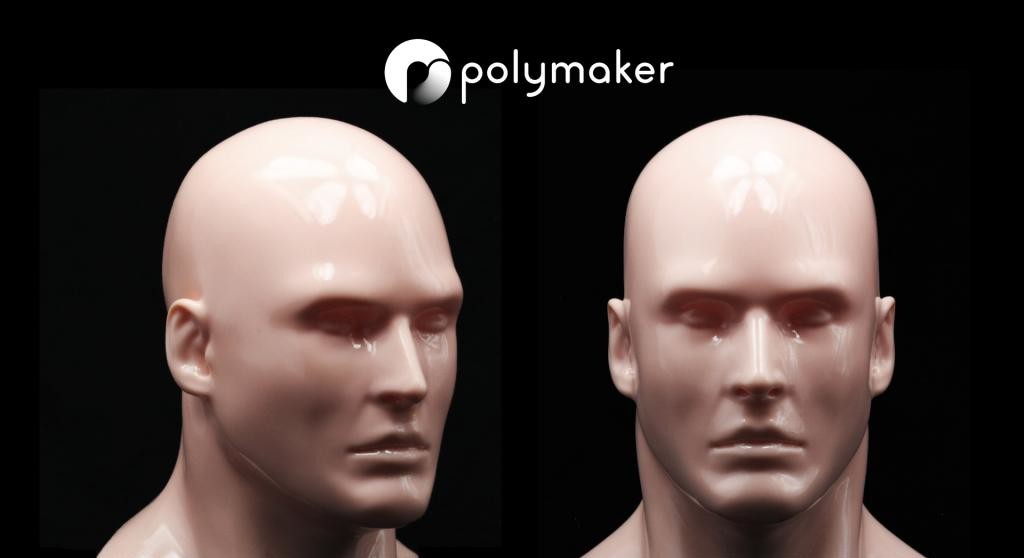 With the Polysher, Shanghai-based Polymaker is getting into the hardware game, but rather than developing a 3D printer, they created an innovative desktop 3D print smoothing machine that was designed to work in tandem with their PolySmooth material. After a session inside of the Polysher, a 3D printed part will have a smooth and glossy surface that will put any injection molded part to shame. The machine doesn’t use any heat, and with its sealed chamber the smoothing process is extremely safe and consistent every time that it’s used. The design is sleek and modern, and has an easy-to-use timer dial that allows the user to control how long the part is smoothed, and ensure that the process is completed within the set time.
With the Polysher, Shanghai-based Polymaker is getting into the hardware game, but rather than developing a 3D printer, they created an innovative desktop 3D print smoothing machine that was designed to work in tandem with their PolySmooth material. After a session inside of the Polysher, a 3D printed part will have a smooth and glossy surface that will put any injection molded part to shame. The machine doesn’t use any heat, and with its sealed chamber the smoothing process is extremely safe and consistent every time that it’s used. The design is sleek and modern, and has an easy-to-use timer dial that allows the user to control how long the part is smoothed, and ensure that the process is completed within the set time.
“The Polysher was designed with simplicity in mind. The machine does not try to hide its inner workings and components – in fact it proudly displays them with its transparent PC shell and rotating plate, you can see the magic happen and see your 3D printed part transform in front of your own eyes,” Aaron Jennings, the Designer & Marketing Manager for PolySmooth and the Polysher, explained to 3DPrint.com.
 The Polysher works thanks to a component called the nebulizer, which is a thin membrane with hundreds of small holes less than 10 microns across that are connected to a piezoelectric actuator. When the nebulizer is activated, it generates a fine aerosol of micro-sized alcohol droplets that fill up the sealed Polysher chamber. This fine, alcohol mist will settle as a film on the surface of the 3D printed part where it will smooth any residual striation marks. Essentially, it can reduce the striation from a 100 um layer (typical for most parts printed at 0.2 mm resolution) to less than 10 um. Those incredible results are striking, and it would take hours of sanding and polishing to achieve them with traditional post processing methods.
The Polysher works thanks to a component called the nebulizer, which is a thin membrane with hundreds of small holes less than 10 microns across that are connected to a piezoelectric actuator. When the nebulizer is activated, it generates a fine aerosol of micro-sized alcohol droplets that fill up the sealed Polysher chamber. This fine, alcohol mist will settle as a film on the surface of the 3D printed part where it will smooth any residual striation marks. Essentially, it can reduce the striation from a 100 um layer (typical for most parts printed at 0.2 mm resolution) to less than 10 um. Those incredible results are striking, and it would take hours of sanding and polishing to achieve them with traditional post processing methods.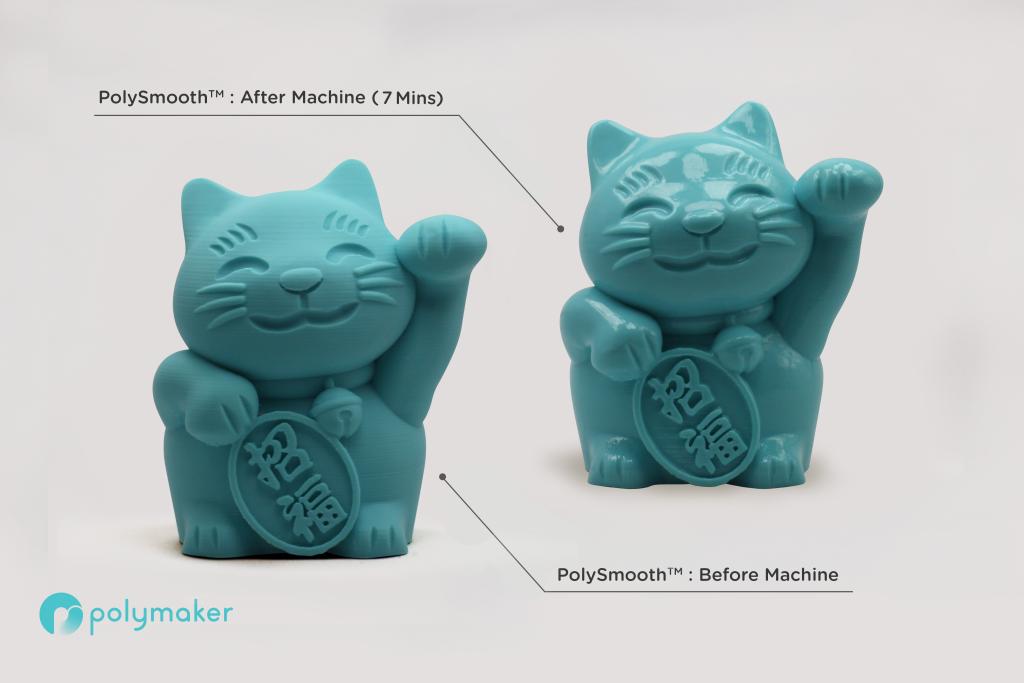
“The Polysher may be simple in its design but its potential applications are incredibly diverse – from creators of cosplay using it for masks and outfits, to industrial designers getting their prototypes without spending hours sanding and even engineers applying their polished print to create molds with flawless surface quality. I believe that this is only the beginning of what is possible,” Jennings told 3DPrint.com.
The simply designed Polysher is very easy to use, and the smoothing action is entirely automated. Simply place the 3D printed part in the chamber, set the timer and the model will start to smooth right away. Once the polishing process is complete, the drying system will dissipate the alcohol mist and the part will quickly start drying. In about a minute, the Polysher can be opened and the drying plate will raise smoothed part to the top so it can be easily removed from the chamber.
Here is a video of the Polysher in action:
The Polysher uses commonly found alcohol that can easily be obtained from any supermarket or hardware store, so there are no special, complicated or expensive materials needed. Polymaker will be launching a Kickstarter campaign for PolySmooth and the Polysher on April 25, and once fully funded they expect to start shipping in September, 2016. You can find out more about PolySmooth and the Polysher, as well as keep updated on the status of the Kickstarter campaign, on their website. Are you thinking about backing this campaign? Discuss in the PolySmooth 3D Printing filament forum over at 3DPB.com.
Subscribe to Our Email Newsletter
Stay up-to-date on all the latest news from the 3D printing industry and receive information and offers from third party vendors.
You May Also Like
3D Printing News Briefs, April 13, 2024: Robotics, Orthotics, & Hypersonics
In 3D Printing News Briefs today, we’re focusing first on robotics, as Carnegie Mellon University’s new Robotics Innovation Center will house several community outreach programs, and Ugogo3D is now working...
Rail Giant Alstom Saves $15M with 3D Printing Automation Software 3D Spark
3D Spark has entered into a three-year deal with the rail giant Alstom. Alstom, a transport behemoth with annual revenues of $16 billion, specializes in the manufacture of trains, trams,...
Meltio Expands Global Reach with New Partnerships in the Americas and Europe
Spanish 3D printing manufacturer Meltio has expanded its sales network across the globe. With the addition of three new partners in the United States, Brazil, Argentina, and Italy, Meltio aims...
3D Printing Webinar and Event Roundup: April 7, 2024
Webinars and events in the 3D printing industry are picking back up this week! Sea-Air-Space is coming to Maryland, and SAE International is sponsoring a 3D Systems webinar about 3D...


